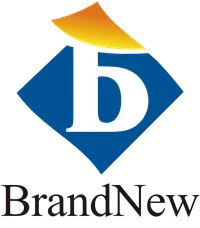The commercial and industrial use of laser diodes has dramatically increased recently. The optical characteristics, small size, and ruggedness of laser diodes have allowed many new uses to be commercialized. The output of laser diodes is very bright considering their small size. Today, hundreds of watts of power are commercially available from laser diodes operating under continuous wave (CW) conditions in packages as small as a few cubic inches. This characteristic makes these devices suitable for cable TV transmission, high definition TV (HDTV) development, and medical applications.
In addition, compared to other types of lasers, laser diodes use very little power. Most laser diodes operate with voltage drops of less than 2 V with power requirements determined by their current setting. Overall efficiencies greater than 30% are typical in the case of laser diodes.
Since laser diodes are made of semiconductor materials, they do not require the fragile glass enclosures or mirror alignment typical of gas lasers. The resulting ruggedness and small size allow laser diodes to be used in environments and spaces in which other types of lasers cannot operate.
Coherence and single wavelength characteristics of laser diodes enable the outputs of these devices to be focused to a diffraction limited spot size. The size of the resultant spot is dependent on the wavelength of the laser - the shorter the wavelength of light, the smaller the size of the spot that can be generated. Operation at shorter blue and UV wavelengths makes smaller spot sizes possible, consequently allowing more information to be stored on optical disks at a higher density.
Another advantage of laser diodes is that they can be directly modulated at high frequencies. By modulating the drive current, the output of the laser diode is modulated with frequencies up to several GHz in high-speed data communications.
Low-Power Laser Diodes
Low-power laser diodes come in a variety of packages. Most have a monitor photodiode integrated with the laser diode. Generally, laser diodes emit light from both ends of their cavity. By monitoring the rear facet output beam of the laser diode, one can maintain the laser at a constant power level. For power levels in the range of 1 W or less, the most common package used is the TO-Can style and is available in either a 5.6 mm or 9 mm diameter base (Figure 1). Other packages include TO-3 packages for higher power laser diodes (>1 W).

Telecommunication laser diodes come in butterfly 14-pin packages. Most include both a thermo-electric cooler (TEC) module, and all include a mounting plate for heat dissipation.

Many other packages are used including coaxial cans for pulsed laser diodes and a variety of fiber pigtailed laser diodes with CD/DVD style laser diodes integrated into a custom designed housing that includes focusing optics and a fiber output.
Vertical Cavity Surface Emitting Lasers (VCSEL) can be fabricated in 2-D arrays for use in optical computing, printing and communications. Their laser structure has a circular aperture allowing the output beam to be easily collimated using a simple spherical lens.

High-Power Laser Diodes
More recently high-power laser diodes operating in the wavelength range of about 0.8–1.1 micron have been getting much attention due to their widespread applications. These lasers are used in optical pumping of solid-state lasers, such as the Nd:YAG, replacing traditional flash lamp designs. High-power laser diodes are tuned to the absorption band of the dielectric crystal resulting in much more efficient pumping of the laser rod, from which a high-power focused coherent beam of light is emitted. This beam can then be used in a variety of industrial, medical, and military applications. Laser diodes have been developed to match the absorption bands of a variety of dielectric crystals in a broad wavelength range.

In addition to applications involving the pumping of solid-state laser rods, high-power laser diodes are also very useful for fiber optic telecommunication purposes. In these applications, a high-power laser diode operating at the wavelength of 980 nm is used as a pump source for erbium doped fiber amplifiers. Such optical amplifiers are used in direct optical amplification of the 1550 nm wavelength telecommunication signals propagating along the long haul telecommunication lines. In this fashion, the need to use electrical amplifying circuits is eliminated and the optical signals are directly amplified, with greater efficiency, and without the need to convert the light signal to an electrical signal and back.
By stacking several high-power laser diode bars on top of one another, it is possible to make stacked laser diode arrays with output powers potentially in the range of kilowatts. Such devices open up a wide range of new possibilities in such applications as industrial welding and precision cutting of metals and various other materials.

More details, pls contact us via Email or Whatsapp:
Whatsapp/Skype/Wechat: 0086 181 5840 0345
Email: info@brandnew-china.com









